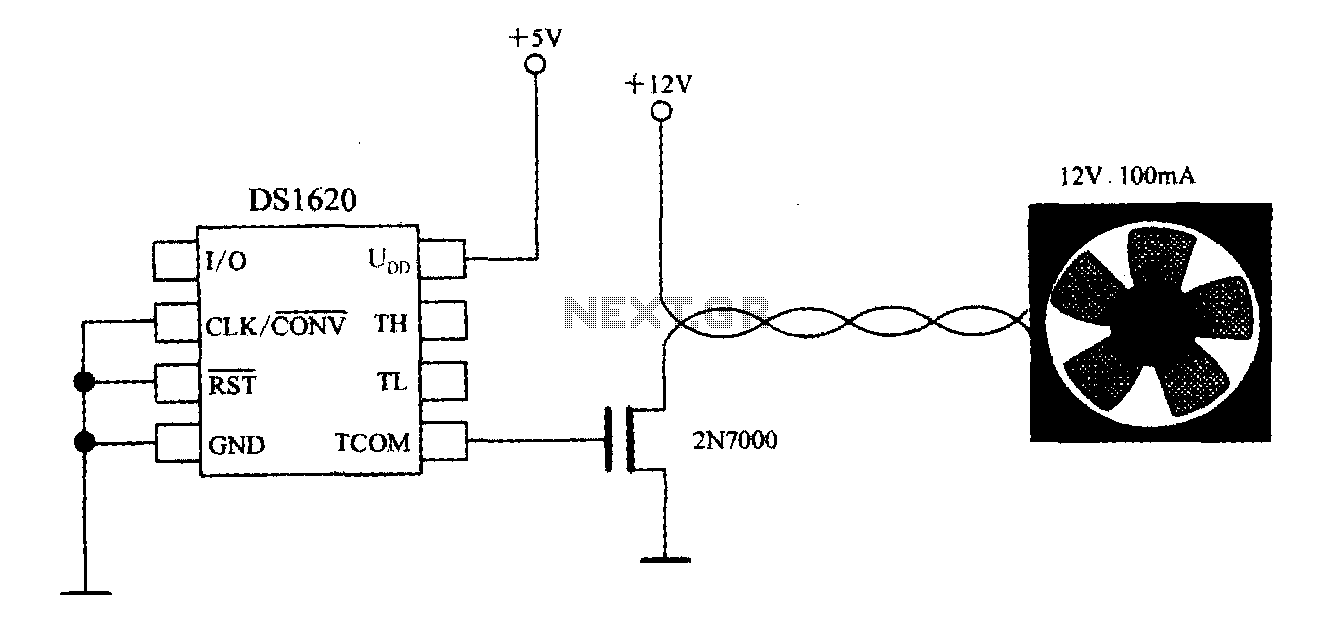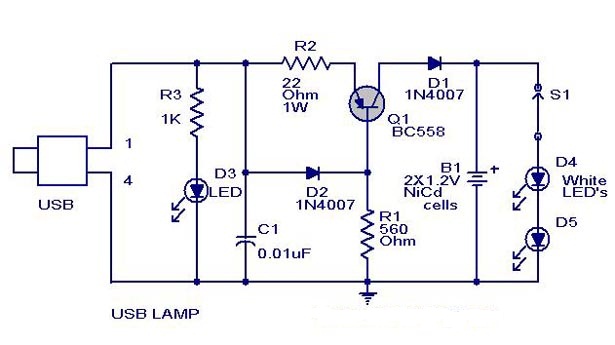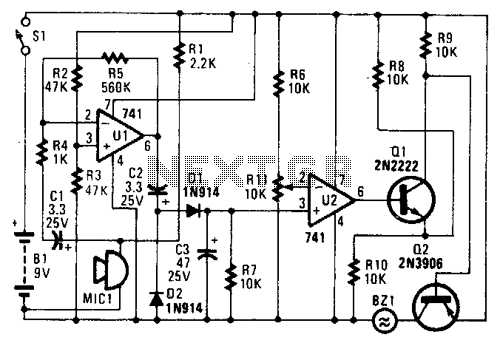
Thermostat with three-wire serial interface smart temperature sensor DS1620 configuration control circuit

The DS1620, in conjunction with a microprocessor, is utilized to monitor temperature. By controlling the fan, the thermal conditions of the chip can be adjusted to establish a temperature control circuit as illustrated in the accompanying figure. The system is characterized by the TCOM signal, which is managed through a 2N7000 type MOSFET to regulate the fan's operation. The fan is activated when the temperature exceeds a threshold (tH) and remains operational until the temperature falls below a lower threshold (tL), at which point the fan is turned off. The 2N7000 MOSFET has key specifications, including an open-drain configuration, a drain-source breakdown voltage (UDSO) of 60V, a rated on-state current (IT) of 280mA, and a maximum continuous output power (PD) of 830mW. For larger cooling fans, the optional 2N7010 type MOSFET can be employed.
The DS1620 temperature sensor is designed for precise temperature monitoring and is integrated with a microprocessor to facilitate real-time temperature control. The microprocessor processes the temperature data from the DS1620 and generates control signals based on predefined temperature thresholds. The TCOM signal is pivotal in this setup, as it directly influences the operation of the fan through the 2N7000 MOSFET.
When the temperature reading from the DS1620 exceeds the upper threshold (tH), the microprocessor sends a signal to the TCOM pin, activating the MOSFET. This action closes the circuit, allowing current to flow through the fan, which initiates cooling. The fan continues to operate as long as the temperature remains above the lower threshold (tL). Once the temperature drops below this threshold, the microprocessor deactivates the TCOM signal, turning off the MOSFET and consequently the fan.
The 2N7000 MOSFET is well-suited for this application due to its specifications, which allow it to handle the necessary current and voltage levels without overheating. In scenarios where a higher cooling capacity is required, the 2N7010 MOSFET can be utilized, which offers enhanced performance characteristics suitable for larger fans.
This temperature control circuit is essential for maintaining optimal thermal conditions in electronic devices, thereby enhancing reliability and performance. The integration of the DS1620 with a microprocessor and MOSFETs exemplifies efficient thermal management in electronic systems.DS1620 with a microprocessor to monitor temperature, by opening or closing the fan can be changed thermal conditions of the chip to achieve temperature control circuit as shown in FIG. Which is characterized TCOM signal through 2N7000 type MOSFET, to control the fan, the chip surface temperature t Open the fan when tH, and maintained until t
The DS1620 temperature sensor is designed for precise temperature monitoring and is integrated with a microprocessor to facilitate real-time temperature control. The microprocessor processes the temperature data from the DS1620 and generates control signals based on predefined temperature thresholds. The TCOM signal is pivotal in this setup, as it directly influences the operation of the fan through the 2N7000 MOSFET.
When the temperature reading from the DS1620 exceeds the upper threshold (tH), the microprocessor sends a signal to the TCOM pin, activating the MOSFET. This action closes the circuit, allowing current to flow through the fan, which initiates cooling. The fan continues to operate as long as the temperature remains above the lower threshold (tL). Once the temperature drops below this threshold, the microprocessor deactivates the TCOM signal, turning off the MOSFET and consequently the fan.
The 2N7000 MOSFET is well-suited for this application due to its specifications, which allow it to handle the necessary current and voltage levels without overheating. In scenarios where a higher cooling capacity is required, the 2N7010 MOSFET can be utilized, which offers enhanced performance characteristics suitable for larger fans.
This temperature control circuit is essential for maintaining optimal thermal conditions in electronic devices, thereby enhancing reliability and performance. The integration of the DS1620 with a microprocessor and MOSFETs exemplifies efficient thermal management in electronic systems.DS1620 with a microprocessor to monitor temperature, by opening or closing the fan can be changed thermal conditions of the chip to achieve temperature control circuit as shown in FIG. Which is characterized TCOM signal through 2N7000 type MOSFET, to control the fan, the chip surface temperature t Open the fan when tH, and maintained until t





